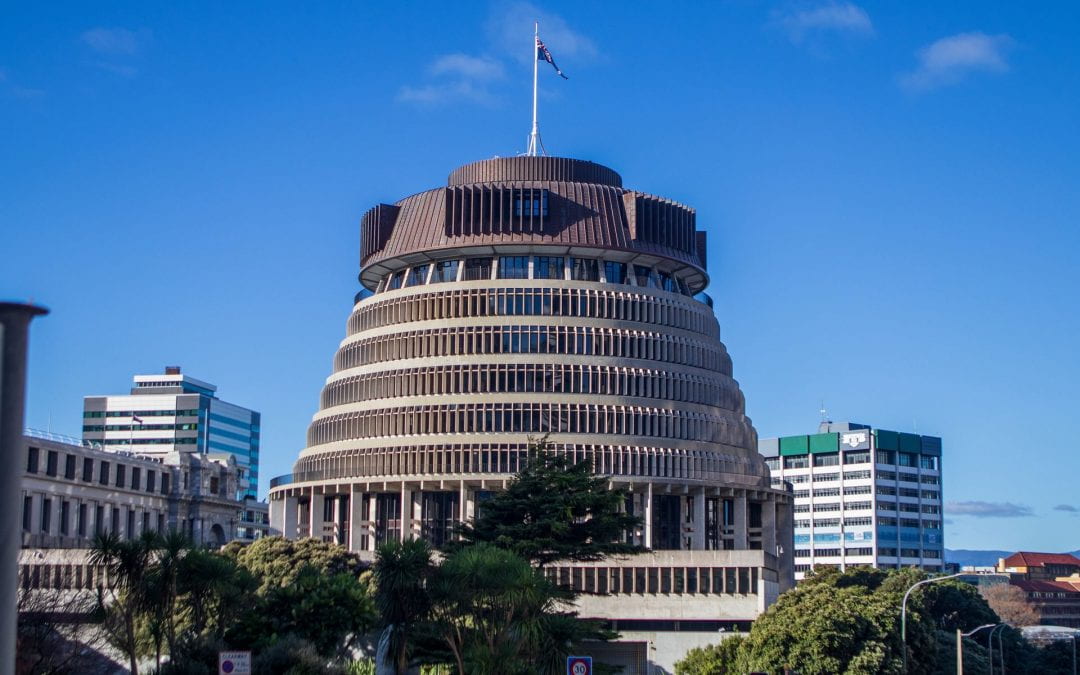By Mark Boyd
Mark Boyd has studied New Zealand elections for three decades and wonders if media coverage of the 2020 election campaign will be a replay of 2014’s ‘dirty politics’.
Mainstream media is still the main source of election news for most voters in New Zealand, especially television, with audiences sometimes topping a million, although online is growing.
But just as important as how much coverage media outlets give to the election campaign, is the quality of what the media presents. Do they cover policy or trivia, and is the campaign framed positively or negatively? Do the various parties get a fair share of the coverage? How are the debates conducted?
My study of television news coverage of the past nine New Zealand election campaigns found that using those indicators of quality, the so-called ‘dirty politics’ election of 2014 hit an all-time low, but in 2017 it rebounded to levels not seen since the 1990s. A parallel study of both television and newspaper coverage of the 2014 campaign showed close similarities between the two media. So what do past election campaigns tell us about the 2020 election coverage?
So far, it’s not looking good. This year seems to be much more like 2014 than 2017. Of course 2020 is also unique, with the campaign being mostly fought on the battleground of Covid-19, on two main fronts: the immediate management of the health crisis; and the longer-term effort to get the economy back to full strength.
Until early August, it looked like the health issue was largely behind us, and the economy was what the campaign would be all about. But then health resurfaced as the big issue and now it isn’t the strong suit for Labour and Jacinda Ardern that it was in July.
The failure to adequately test all staff working at the border and in isolation facilities for returnees from overseas, and what appears to be a lack of complete candour on the part of the Government on that inadequate situation, has provided ammunition for the Opposition and its allies in the media commentariat. By its very nature, the coverage of such revelations is going to be negative.
In 2014, National offered little fresh, substantive policy, choosing instead to campaign on its record of six years in government and the managerial competence of John Key. The media went looking for new narratives and seized control of the agenda with negative coverage of the scandals revealed in the Nicky Hager book Dirty Politics and the circus that followed the Internet Party’s merger with the Mana Movement.
But in 2017, momentum was on the side of the politicians, with a new face in the role of Opposition Leader, who vowed to campaign with ‘relentless positivity’, and succeeded in doing so. Not only did the politicians seize command of the agenda from the media, but unusually, Jacinda Ardern and Labour had the upper hand, overcoming the usual ‘advantage of incumbency’ enjoyed by governing parties.
Labour’s campaign strategy this year is very similar to National’s in 2014: ‘we beat Covid-19 under Jacinda Ardern’s ‘kind’ leadership, stick with us but, by our own admission, don’t expect a lot of hard policy’. That’s an open invitation to the media to go looking for stories elsewhere, particularly scandals or headline-grabbing attacks on the Government from a reinvigorated Opposition under new leader Judith Collins.
The problem for Collins is that unlike 2014, the majority of scandals have come from within her ranks, with a slew of resignations, both in and out of Parliament: Andrew Falloon, Michelle Boag, Hamish Walker, Roger ‘Merv’ Bridge.
The Government also hasn’t been without its troubles, with the resignation of David Clark from Cabinet and Iain Lees-Galloway leaving Parliament.
Scandals have been a constant of New Zealand election campaigns for the past two decades such as ‘Corngate’ in 2002, the ‘Brethren pamphlets’ in 2005, ‘Teagate’ in 2011. The question this year is whether more scandals will pop up, and how much play the media will give them.
Another key area of media coverage to watch out for is the opinion polls – the so-called ‘horse-race’. The media is often criticised for the emphasis they place on the polls, but this year they are important.
With the election date pushed back a month, there’s a lot more time for a volatile electorate to move its support around, not least at the margins, with both the Greens and New Zealand First dangerously close to the 5 percent threshold, and no obvious electorate seat in the bag.
The leaders’ debates will also be keenly watched – New Zealand has one of the longest histories and highest audiences for debates in the world. How Ardern’s positivity and ‘kindness’ will fare against Collins’ more combative stance in one online and three television debates will influence many voters, as will the tone of the media commentary.
With an extra four weeks of campaigning and an ongoing health emergency, this campaign will be like no other in living memory. If the politicians don’t take the high road of policy and positivity, the media certainly won’t.
This article was originally published in the September 2020 edition of UniNews and was republished with permission.
Mark Boyd is an Honorary Academic at the University of Auckland where he teaches journalism studies in the Media and Communication Department.
Disclaimer: The ideas expressed in this article reflect the author’s views and not necessarily the views of The Big Q.
You might also like:
Who is looking the best for New Zealand’s general election?
Dear John, could you be the Kingmaker? Intriguing possibilities in 2020 New Zealand election

